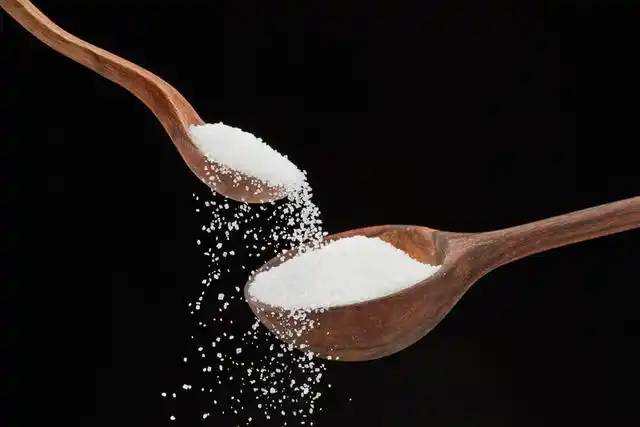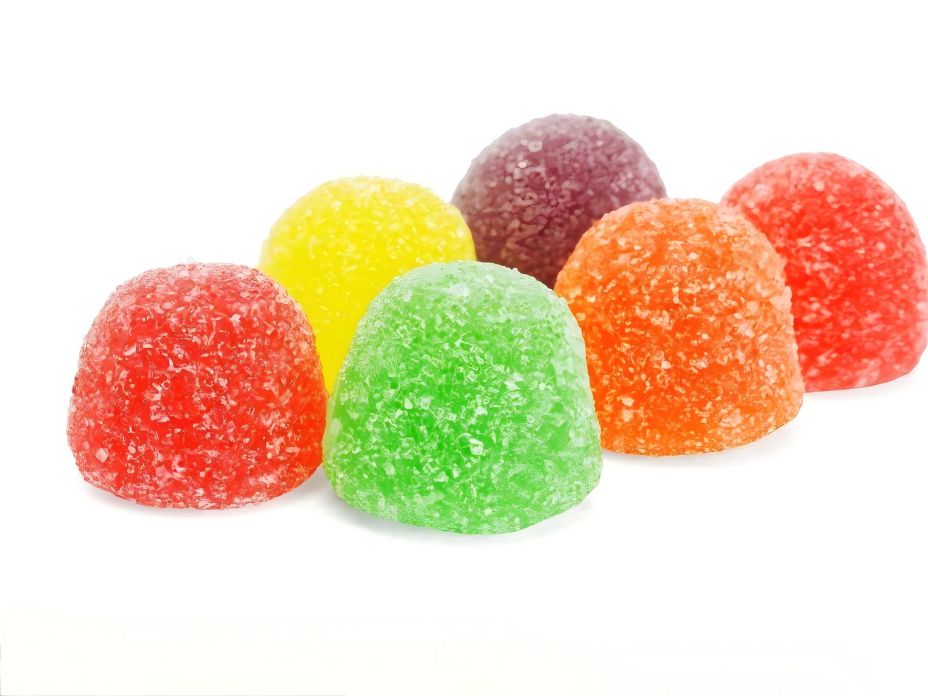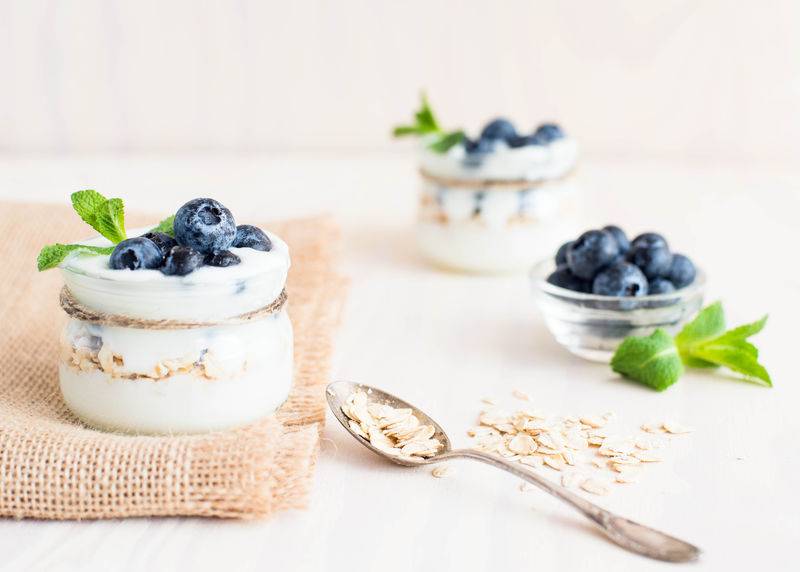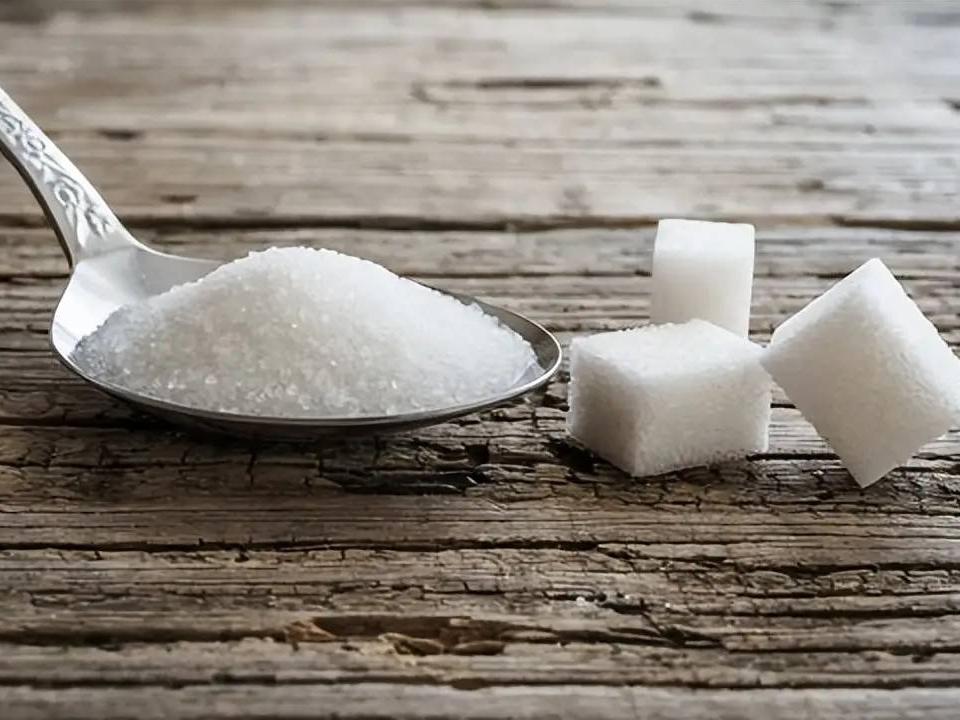What Are the Production Methods for Xylitol Powder?
Xylitol, also known as pentane-5-ol, is a polyhydric alcohol with the molecular formula C₅H₁₂Os and a relative molecular mass of 152.15. 15, appearance is white crystalline powder, no odor, melting point is 92~96℃, easily soluble in water, solubility 169g(20℃), heat of solution - 145.6J/g, heat energy 16.99J/g]. Slightly soluble in methanol, ethanol, and acetic acid; insoluble in ether and chloroform. Xylitol is hygroscopic, sweet, and has a sweetness equivalent to sucrose and a caloric value equivalent to glucose. Xylitol is a chemical product with high practical value that makes comprehensive use of agricultural waste and is produced using high-tech methods [2].
Xylitol is widely used in the chemical, pharmaceutical, and food industries. It can be used to make surfactants, emulsifiers, demulsifiers, alkyd resins, and coatings. It can also be used instead of glycerin in the paper, daily necessities, and national defense industries. It is also a raw material for the pharmaceutical industry to make various drugs. Since the metabolism of xylitol in the human body is not related to insulin, it is suitable for producing foods for diabetics. Only a few countries in the world, such as China, Russia, Finland, the United States, and Italy, produce xylitol, and the output is not large and the production history is not long. In recent years, the market demand for xylitol has been growing. China is a large agricultural country with abundant raw materials, and it is uniquely positioned to develop the xylitol industry. Recently, scholars at home and abroad have done a lot of theoretical research on the preparation and application fields of xylitol. The author systematically summarizes the main production methods of xylitol and discusses the current hotspots and trends in xylitol production and application research.
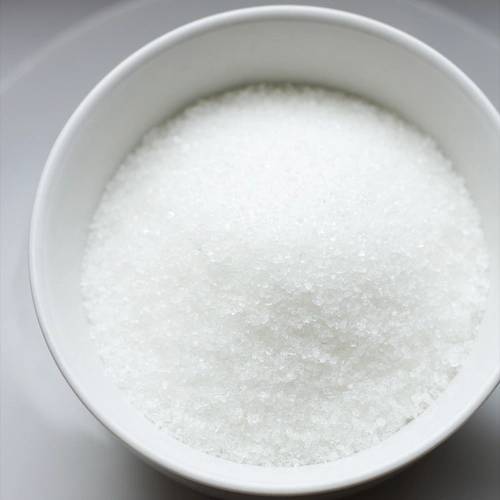
1 Xylitol production technology
There are three main production technologies for xylitol: extraction, chemical synthesis and biological fermentation. The extraction method has low yield and high cost, and cannot meet market demand. In industrial production, xylitol is mainly produced by the traditional chemical hydrogenation method, but this has many disadvantages. The biological fermentation method is currently a research hotspot, but most of the research results are still at the laboratory stage [3].
1.1 Extraction method
As early as 1890, German scientists Fisher and Stahe and French scientist Betiand discovered xylitol, but the first discovery of xylitol in plants in nature was in 1943. Xylitol is widely found in various fruits and vegetables. [4], its content (in milligrams of xylitol per 100 grams of dry matter or per 100 milliliters of juice) is as follows (in milligrams): banana 21.0, green plum 925.0, strawberry 362.0, apple juice 120.0, pineapple 2 1.0, pumpkin 96.5, spinach 107.0, lettuce 131.0, cabbage 94.0, fennel 92.0, cauliflower 300.0, carrot 86.5, onion 89.0, white mushrooms 128.0, etc.
Xylitol is prepared by extraction, which involves the use of solid-liquid extraction to extract xylitol from fruit and vegetables. Although xylitol is widely found in various fruit and vegetables, its content is relatively low. The xylitol content in cauliflower is relatively high, but it is only 0.3% of the dry mass, making large-scale production difficult and uneconomical (S). Finland, Russia and other European countries have an abundance of birch resources, making them major producers of xylitol. Even today, these countries still use the traditional birch cooking method to produce xylitol, which involves steaming birch wood chips with water to obtain a crude sugar liquid, which is then refined to obtain the crystalline xylitol product. However, this method not only consumes a large amount of forest resources, but also has a low yield.
1.2 Chemical synthesis
1.2.1 Traditional chemical synthesis
Xylose can be produced by hydrolyzing xylan in plant fiber raw materials (such as rice straw, corncobs, etc.) with the help of a dilute acid catalyst. Xylitol is produced by hydrogenating xylose under a certain pressure with nickel as the catalyst.
This is the most common method of industrial application today, but it requires high temperatures (115~135°C), high pressures (about 6.5 MPa), flammable and explosive high-pressure hydrogen gas, nickel catalysts with high purity requirements for the solution, and complicated separation and purification processes. This method has high capital investment and operating costs, causes serious pollution, and is difficult to produce high-purity finished products.
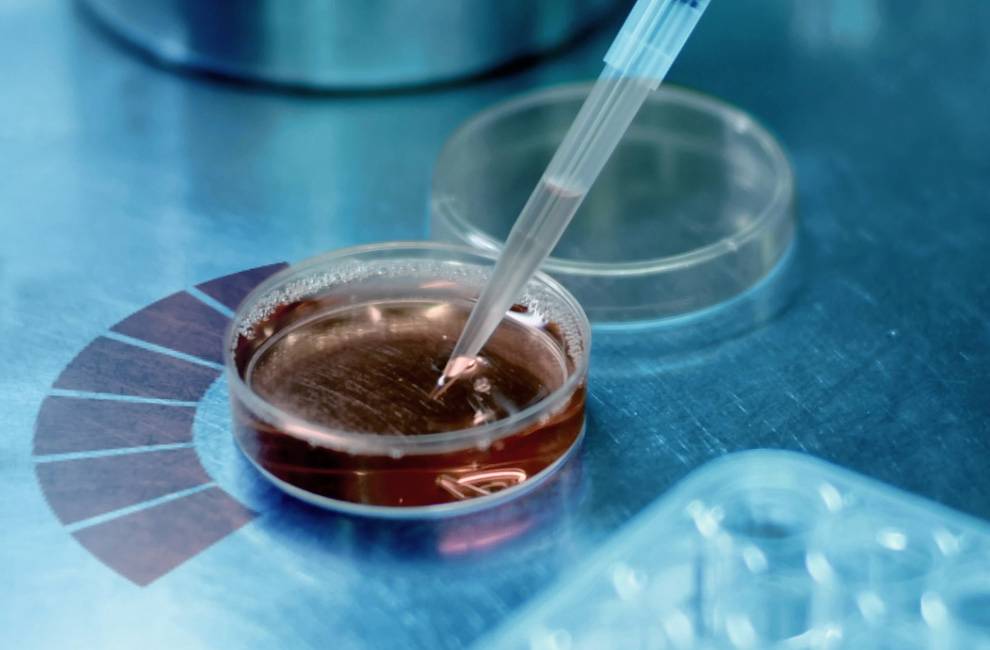
1.2.2 Improvement and development of the chemical hydrogenation process
Researchers have continuously improved the chemical hydrogenation synthesis of xylitol technology. The technology center of Shandong Yucheng Futian Pharmaceutical Co., Ltd. has made major improvements to various sections of the traditional process. 6, the main ones are: 3-step pretreatment before formal hydrolysis of the raw material: washing, acid boiling, boiling, and then acid hydrolysis, to thoroughly clean the ash in the raw material and ensure product quality; eliminating the neutralization process, the hydrolysate is directly decolorized; using a decolorization resin and activated carbon together to replace single activated carbon decolorization; a pressureless ion exchanger is used instead of an open-ended ion exchanger; a multi-effect falling film evaporator is used in the evaporation process to replace the old-fashioned central circulating tube evaporator, reducing the steam consumption of evaporating one ton of liquid by more than 50%; the batch hydrogenation process is used instead of the continuous hydrogenation process; and the latest ultrafiltration technology and the process of continuous vacuum crystallization with material compensation are used. The improved production process not only reduces the consumption of raw and auxiliary materials, but also improves all product indicators to meet the standards of the US FCC IV edition and the US Pharmacopoeia USP 23 edition.
1.2.3 Xylitol synthesis by electrolytic reduction
There have been reports of xylitol synthesis by electrolytic reduction. Ji Yanguang et al. [7] used a homemade electrode as the cathode, a Pt electrode as the anode, and an H-type electrolytic cell with a diaphragm for electrolysis. The cathodic potential was -1.2V, the initial cell voltage was 4.2V, and the catholyte was 2g xylose dissolved in 60mL water. The supporting electrolytes were HCl, H₂SO₄, MgSO₄, LiCl, AcOH, and Mg(AcO)₂. The electrolytic temperature was 30–70°C and the electrolysis time was 18.5 h. Xylose is reduced to a neutral molecule, which does not move in an electric field. Then, electrodialysis is used to remove anions and cations to achieve purification. The crude product liquid enters the electrodialysis apparatus through the channel, and after 5 stages of separation, the water is evaporated until it becomes a viscous liquid, which is then transferred to a petri dish. The xylitol product is dried in an 80°C drying oven. Huang Yuxiu 8 prepared xylitol using the electrolytic reduction method, achieving a xylose conversion rate of over 95%. This process is simple to handle and does not require pressurized equipment, but the electrode catalytic activity is insufficient and energy consumption is high, so it needs to be further improved and enhanced.
1.3 Bioconversion method
Due to the obvious shortcomings and deficiencies of the extraction and chemical synthesis methods, domestic and foreign scientific researchers have, after diligent exploration, found a new way to produce xylitol, the bioconversion method. The basic principle of the bioconversion method is that the xylose contained in agricultural waste (such as rice straw, bagasse, corncobs, etc.) is hydrolyzed with dilute acid to obtain a xylose hydrolysate, and then xylitol is obtained by fermenting the xylose in the hydrolysate with microorganisms. The microbial fermentation method not only has the potential to eliminate the xylose purification step, but also simplifies the xylitol separation step. It is a promising production method. 9 However, at present, the production of xylitol by biological fermentation is still in the laboratory stage, and industrial production applications are rare.
1.3.1 Fermentation strains and pathways
There are many types of microorganisms in nature that can utilize xylose, including bacteria, actinomycetes, molds, and yeasts. To date, only a small number of species in the genera Corynebacterium, Enterobacter and Mycobacterium, such as Corynebacterium sp, Enterobacter liquefaciens and Mycobacterium smegmatis, can ferment xylose to produce xylitol. However, since xylitol is only an intermediate product in the normal physiological metabolism of these bacteria, the yield is quite small, so it is not yet of any production value. Izumori et al. i10 found that M. smegmatis has a strong ability to convert xylose to xylitol, with a conversion rate of 70%.
Very few fungi can ferment xylose to produce xylitol, such as Penicillium, Aspergillus, Rhizopus, Byssochlamys and Neuraspora spp., which can produce low concentrations of xylitol in a medium containing xylose. . Dahiya'1 inoculated Petromyces albertensis into a medium with an initial xylose mass concentration of 100 g/L and cultured for 10 days. The measured mass concentration of xylitol was 39.8 g/L.
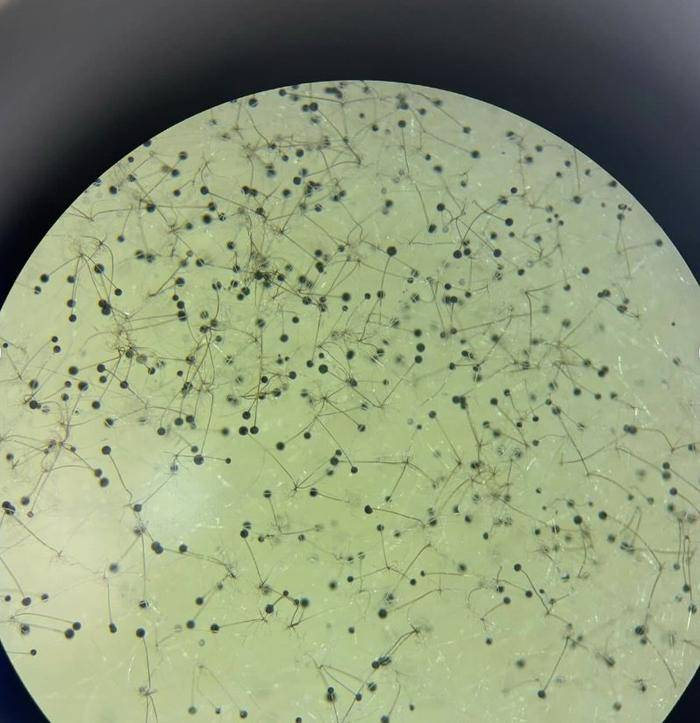
Among microorganisms, yeast is the most superior in its ability to convert xylose to produce xylitol. 9 Candida genus yeasts have strong conversion capabilities [12-13] , such as C. tropicalis 14], C. guillermondi, C. mogii, and C. parasilosis¹⁵]. Other species with strong conversion abilities include the genus Debaryomyces, such as D. hansenii, and the genus Pachysolen, such as Ptannophilus⁶]. Barbosa⁷ found that C. guillermondi and C. tropicalis could utilize more than 90% of D-xylose within 24 hours among 44 yeast species. Other species such as the genus Sachuromyces and the genus Schizosaccharomyces also have a certain degree of conversion ability.
The fermentation process uses the active hydrogen (ionized hydrogen) in the cell walls of the microorganisms to reduce xylose in the hydrolysate to xylitol under the action of xylose reductase 18-19], while purifying the hydrolysate of hexose sugars such as glucose, galactose, and mannose, which are then consumed as nutrients by the cells during cell growth.
1.3.2 Fermentation process
The process flow for producing xylitol from microbial fermentation of plant fiber raw materials is as follows. Before xylitol can be produced by fermentation, the hemicellulose raw materials must be pretreated. On the one hand, pretreatment and acid hydrolysis can reduce the molecular polymerization degree of the fiber crystals, change the spatial configuration, and make it easier to undergo enzymatic reactions; on the other hand, detoxification can remove harmful substances and improve the fermentation performance of the hydrolysate.
Gong Xiao et al. 16 proposed that the main factors affecting the production of xylitol by fermentation are: aeration, initial xylose concentration, nitrogen source, initial cell concentration, temperature, pH, other monosaccharides, metal ions and fermentation methods, which provide a basis for studying the fermentation process of xylitol. Zhang Xiaoyuan et al. 20 used tropical yeast to study the fermentation conditions for producing xylitol from xylose. The optimal medium conditions were obtained by optimizing the process using a shaking bottle fermentation: initial xylose 50 g/L, peptone 5 g/L, yeast powder 10 g/L, magnesium sulfate 0. 5g/L, potassium dihydrogen phosphate 5g/L, ammonium sulfate 1 g/L. The optimal fermentation conditions are: pH 6.0, shaking bottle fermentation liquid volume 50mL/250mL, rotation speed 200r/min, fermentation temperature 30℃, fermentation time 28h.
Deng Lihong et al. [21] found that the xylitol conversion rate is higher when the initial xylose concentration is around 80 g/L; restricted oxygen conditions are conducive to xylitol accumulation. Yeast extract and peptone are more suitable organic nitrogen sources for xylitol production, while yeast extract is more conducive to yeast cell growth. Kwon et al. 22 used a hyperosmotic tropical pseudocerevisiae to compare fermentation methods. The results showed that in batch culture, this yeast produced xylitol at a maximum rate of 3.5 g/(L·h) with an initial xylose mass concentration of 200 g/L. In fed-batch culture, the xylose mass concentration was maintained at 260 g/L, and after 48 h, the xylitol mass concentration reached 234 g/L, with a production rate of 4.88 g/(L·h); in cell recycling fermentation, a deep-membrane bioreactor was used to ferment xylitol by injecting air to circulate yeast cells. After 19.5 h of fermentation, the average mass concentration of xylitol was 180 g/L, the generation rate was 8.5 g/(L·h), and the conversion rate was 85%. The production rate and total yield of xylitol in cell recycling fermentation were 3.4 and 11.0 times those of batch fermentation, respectively.
1.3.3 Development and research trends in fermentation
1.3.3.1 Selection and breeding of strains using genetic technology
In recent years, with the development of genetic engineering technology, the use of genetic engineering technology to breed strains and improve the ability of strains to convert xylose to produce xylitol has become a hot research topic. Jeun et al. 23 cloned the xylose reductase gene XP and the transporter gene STH from P. stipitis and Azotobacter vinelandii, and introduced them into the strain S. cerevisiae BJ3505 to obtain the recombinant strain S. cerevisiae BJ3505/XR/STH, and then carried out xylose fermentation. The initial xylose mass concentration was 100 g/L, and the measured results are as follows: the mass concentration of xylitol was 60.0 g/L, and the production rate was 1.58 g/(L·h). which is much higher than that of the initial strain (7.50 g/L, 0.20 g/(L·h)).
1.3.3.2 Immobilized cell technology is applied in the xylitol industry
Compared with free fermentation, immobilized fermentation can be reused, which greatly improves the reaction efficiency. Lin et al. [24 used polyvinyl alcohol as the main embedding agent to immobilize Candida guillier-mondii, and added sodium alginate and activated carbon as additives. The ratio of the embedding agent was 8% polyvinyl alcohol, 1% sodium alginate (SA), and 1.5% activated carbon (C). 1.5%, the cross-linking agent is saturated H₂BO₃-4%CaCl₂, the rupture time of the immobilized cell microbeads in the buffer solution is increased to 140 h, and fermentation can be continuously carried out for more than 24 d. The xylitol yield is increased to 67.9%, and the mechanical strength is also increased by nearly 3 times. Carvalho et al. 2 used calcium alginate to immobilize C. guilliermondii to convert xylose from sugarcane bagasse hydrolysate. The conversion rate could reach 0.81 g/g after 120 h of fermentation, and the concentration and production rate of xylitol were 47.5 g/L and 0.40 g/(L·h), respectively.
1.3.3.3 Xylitol production by fermentation of glucose as a substrate [18]
If fermentation can be carried out using glucose as a substrate, which is widely available and inexpensive, it will certainly reduce the production cost of xylitol and promote its large-scale production. However, no microorganisms have been found in nature that can directly ferment glucose to produce xylitol. Some researchers have tried a mixed fermentation method, which uses three microorganisms with different metabolic functions to ferment glucose as a starting substrate in three steps: in the first step, D. hansenii ferments glucose to produce D-arabinitol; in the second step, A. suboxydans oxidizes D-arabinitol to D-xylulose; and finally, C. guilliermondii reduces xylulose to xylitol. However, this process is time-consuming, the yield is low, the by-product yield is high, and purification is difficult. How to reduce the by-product yield and make purification easier has become a research hotspot.
In microbial fermentation, because the culture medium contains low levels of impurities, it is much simpler to separate and collect xylitol than in chemical methods, and the purity of the product is correspondingly improved. In addition, its specificity is strong, which can eliminate the need for high-pressure equipment and large amounts of catalysts, saving energy consumption, simplifying the process, reducing environmental pollution, and turning waste into treasure. With the continuous improvement of bioengineering technology, the biological conversion method will inevitably dominate the production of xylitol in the future.
2 Functions and applications of xylitol
Xylitol is an important five-carbon sugar alcohol and the variety with the best physiological activity among all edible sugar alcohols. It has many unique functions and is widely used in the food, pharmaceutical, and chemical industries.
2.1 Applications in the food industry
Xylitol is used in the production of food for diabetics because its metabolism in the body is not related to insulin. Xylitol has a cooling effect in the mouth and is not fermented by bacteria to produce lactic acid in the mouth, making it an undesirable medium for microorganisms. It is therefore non-cariogenic and can be used to make chewing gum. Xylitol has unique advantages as a sugar substitute . During food processing, it does not undergo the Maillard browning reaction due to heating, because unlike sugars, xylitol does not have an aldehyde group and will not react with amino acids to darken the color of the food. Xylitol is not affected by yeast and bacteria, does not cause mold, and can extend the shelf life of food. Therefore, xylitol is widely used in products such as chewing gum, chocolate, beverages, and candy [26-28]. Xylitol can be used as an additive in alcoholic beverages. Japanese research has found that adding 0.5% to 3.0% xylitol can improve the color, aroma and taste of the alcohol, giving it a full-bodied, rich, mellow and delicious flavor, and reducing the spoilage caused by microorganisms [29].

2.2 Applications in the pharmaceutical industry
2.2.1 Treatment of diabetes [30-31]
Xylitol compounds have a good effect on the treatment of diabetes patients, because xylitol does not require insulin to participate in the metabolic process, can quickly enter cells, and be completely utilized, without affecting blood glucose concentration. Xylitol can also supply energy to diabetic patients, alleviate the abnormal decomposition of fat and protein in patients, prevent the production of ketone bodies, and prevent patients from developing acidosis and lethargy. Its effect is much stronger than that of glucose, fructose or other pentoses.
2.2.2 Xylitol's anti-caries properties [32-33]
Xylitol cannot be fermented by cariogenic bacteria in the mouth, inhibiting the growth of streptococci and the production of acid. It can also promote salivary secretion, slow down the decrease in pH, reduce acid erosion of teeth, prevent tooth decay and reduce the production of dental plaque, and strengthen teeth.
2.2.3 Improves liver function [29]
Xylitol can promote the synthesis of glycogen in the liver, reduce transaminase, and slow down the production of fatty acids in the blood plasma. It can also lower the levels of lactic acid, pyruvate, and glucose in the blood, while increasing the level of insulin. This improves liver function and protects the liver. 2 In 2005, the clinical report on the liver-protecting function of xylitol conducted by the Xiyuan Hospital of the China Academy of Traditional Chinese Medicine pointed out that: a clinical controlled trial was conducted on 100 liver disease patients, and the test group was required to consume 30g of xylitol per day for 3 months. The results showed that the xylitol group had a certain effect on restoring liver function. It also had a beneficial effect on the patients' fatty liver and hyperlipidemia, and their clinical symptoms, liver function, and blood lipids all improved. This shows that xylitol is a health supplement that can help protect the liver and regulate lipids.
2.2.4 Treating lung infections [4]
The ability of xylitol to treat lung infections was discovered in 2000 by Iowa State University in the United States, and has since attracted the attention of the medical community. Although xylitol is not an antibacterial substance, it can reduce the salinity of the mucus layer on the surface of the patient's respiratory tract, thereby helping the patient to recover and prevent lung infections. Moreover, unlike other antibiotics, xylitol does not provide bacteria with antibodies while killing them, thus increasing the resistance of the bacteria that are not killed. Xylitol simply drives away harmful bacteria.
2.3 Applications in the chemical industry [34]
Xylitol and C5~C9 fatty acid esters can be used to produce heat-resistant plasticizers for shoe soles, agricultural films, artificial synthetic leather, cable materials, etc.; xylitol can be used as a starting agent to produce polyether, which is a basic raw material for further synthesis of rigid foam plastics; taking advantage of the fact that xylitol has five hydroxyl groups, it can be used as a substitute for glycerin and edible oil and is used in paper making, daily chemical products and the defense industry. Xylitol can be used to produce surfactants with antibacterial properties. Xylitol can be catalyzed with phenol, formaldehyde, orthophosphoric acid and boric acid to obtain a viscous, transparent liquid, which is a good leather tanning agent. Xylitol has excellent heat resistance and corrosion resistance compared to hexanol and is an important emulsifier with good application prospects.
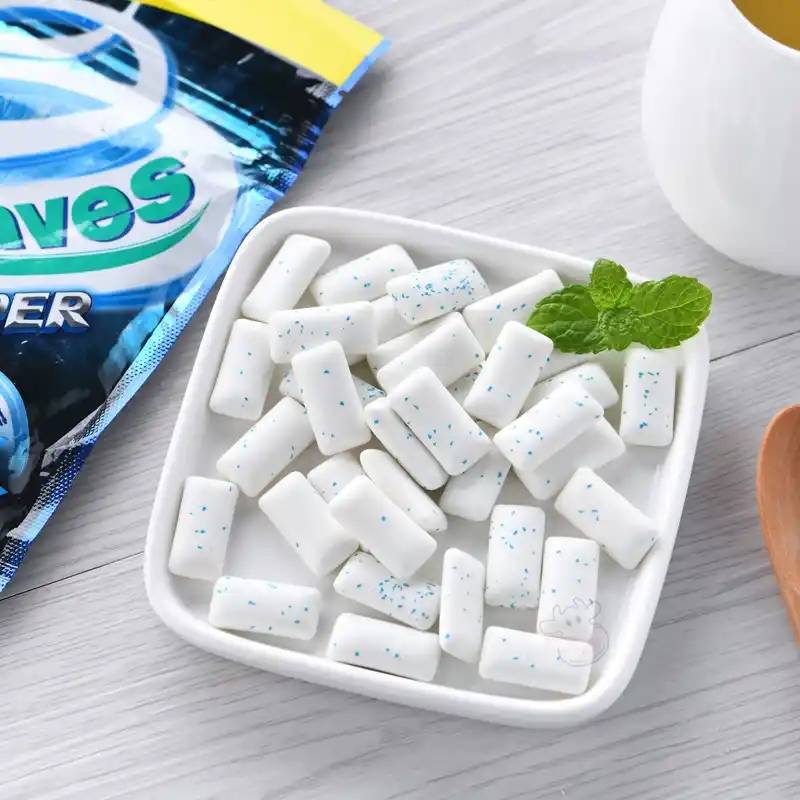
3 Outlook
Xylitol is found in many fruits and vegetables, but the content is very low, and direct extraction is difficult and expensive. The chemical catalytic hydrogenation of xylose is currently the main method of industrial production of xylitol. Although continuous exploration and improvement have achieved good progress, this production process requires separate hydrogen production and reaction under high temperature and pressure. The process is complex, safety is poor, the cost is high, and pollution is relatively serious. The preparation of xylitol by biological fermentation can save energy, simplify the process, reduce environmental pollution, and improve product quality. In recent years, researchers have done a lot of work on the preparation of xylitol by fermentation and have also achieved important theoretical research results.
At present, the most widely used strain with strong transformation ability is tropical pseudomyces[3-36], but with the development of genetic engineering, microorganisms with better transformation effects will be further screened. Fermentation equipment should also be further improved in order to expand production and increase productivity. It was reported that in 2009, Tangchuan Biotechnology (Xiamen) Co., Ltd. successfully put the first phase of its xylitol production line using biological fermentation into production. This is the first company in the world to use biological fermentation to produce xylitol, which marks the gradual industrialization of xylitol production by biological fermentation. However, its industrial application has just begun and still needs to be explored and improved.
The xylitol industry is a new industry that is developing rapidly. Raw materials are readily available, the products have a wide range of uses, and the market prospects are broad. It is a promising industry, but the production process is backward, which to a large extent restricts the development of the xylitol industry. Efforts to explore the process of preparing xylitol by biological fermentation and industrialization will be the future direction of xylitol production and development. It is necessary to keep abreast of industry trends, actively develop new varieties and high-end products, promote technological progress in enterprises, improve product quality, reduce production costs, participate in international competition, align with international practices, give play to the role of industry associations, and take the path of joint development.
References:
[1] Huang Jing. Xylitol synthesis, application and market prospects [J]. Toothpaste Industry, 2003(3):36-38.
[2] Zhang Fengqing, Zhang Lijun, Zhou Changmin. Xylitol properties and applications [J]. Contemporary Chemical Industry, 2008,37(1):92-95.
[3] Li Mei. Progress in the production process of xylitol [J]. Petrochemical Applications, 2007, 26(6): 8-11.
[4] Cheng Ying, Guo Shulei, Ming Lixue. Research progress in the production process and application of xylitol [J]. Gansu Petroleum and Chemical Industry, 2008, 22(3): 18-21.
[5] Zheng Jianxian. Functional sugar alcohols [M]. Beijing: Chemical Industry Press, 2005: 1-6.
[6] Wang Guanbin, Zhao Guanghui. Production and development trends of xylitol [J]. Zhejiang Chemical Industry, 2005, 36(2): 25-26
[7] Ji Yanguang, Gao Jian. A new method for xylitol synthesis [J]. Sichuan Food Industry Science and Technology, 1996, 15(4): 51-53.
[8] Huang Yuxiu. Production process of xylitol by electrodialysis [J]. Applied Chemistry, 1997, 14(32): 105-106.
[9] Xu Jun, Zheng Jianxian, Ge Yazhong. Xylitol production by fermentation [J]. China Food Additives, 2003(5):44-49.
[10]ZUMORI K,TUZAKI K.Production of xylitol from D-xylulose by Mycobacterium smegmatis[J].Joumal of Fementation Technology,1988,66(1):33-36.
[11]DAHIYAJS.Xylitol poduction by Perommyces albertensis grown on medium containing D-xylose[J].Can JMicobiol,1991,37(1):14-18.
[12]DANELA B G,FRANCISLENE AH,ADALBERTO PJr,et al.The behavior of key enzymes of xyloe metabolism on the xylitol producion by Candida guiliermondi grow in hemicellulosic hydrolysate[J].Joumal of Industrial Microbiology and Biotechnology,2009,36(1):87-93.
[13]GURPIHARES DB,PESSOA AJr,ROBERTOIC.Glucoe-6-phosphate dehydnogenase and xylitol prduction by Candida guillermondi FT 20037 using statistical experimental desig[J].Process Biochemistry,2006,41(3):631-637.
[14JOH DK,KIM S Y.Increase of xylitol yield by feding xyloe and glucose in Candida tropicaL[J].Applied Microbiology and Biotechnology 1998,50(4):419-425.
[15]KIM SY,KIMJH,OH D K.Improvement of xylitol production by controling oxygen supply in Candida parapsilsi[J].Joumal of fementa- tion and bioengineering,1997,83(3):260-270.
[16] Gong Xiao, He Zhi-fei, Chen Pan, et al. Research progress in the production of xylitol by fermentation [J]. Cereals, Oils and Fats, 2008(3):44-48.
[17]BARBOSA MFS,MEDEIROS M B,MANCLHAIM,et al.Sereening of yeasts for production of xylitol from D-xylose and some factors which afect xylitol yield in Candida guiliermondi[J].Joumal of Industrial Microbiology and Biotechnology,1988,3(4):241-251.
[18] Wu Chunxia, Kan Jianquan. Research progress on the production of xylitol by yeast transformation of xylose [J]. China Food Additives, 2007(3):110-113,72.
[19] Ren Hongjun, Zhang Zhongtao. A new breakthrough in the production process of xylitol—biohydrogenation technology [J]. Chemical Technology Market, 2007(2):42-49.
[20] Zhang Xiaoyuan, Wang Songmei, Zhu Xiqiang, et al. Research on the production of xylitol by fermentation of tropical pseudomonads [J]. Food and Drugs, 2006, 8(11A): 27-30.
[21] Deng Lihong, Wang Yanhui, Zhang Yang, et al. Research on the fermentation of xylitol by tropical pseudomonads [J]. Food and Fermentation Industry, 2004(3):37-40
[22]KWONSG,PARKSw,OH DK.Increaseof yiol producivity by ellreycle fementation of Candida topicalis using submerged membrane bioreactor[J].Joumal of Bioscience and Bioengineering,2006,101(1):13-18.
[23JEUN YS,KIM M D,PARK Y C,et al.Expresion of Aaotboce vinelandi soluble transhydngenase petubs xyloe reductasemediated conversion of xylose to xylitol by recombinant Saccharimyes cererisiae[J].Joumal of Molcular Catalysis B:Enzymatic,2003,26(3/4/5/6): 251-256.
[24] Lin H, Xu P, Zhou H. Study on the improvement of xylitol production by polyvinyl alcohol (PVA) microbeads fermentation [J]. Sichuan Food and Fermentation, 2006, 42(5): 27-31.
[25] CARVALHO W,SANTOSJC,ANLHALC,et al.Xyiol production from sugarcane bgase hydnolysate:Metabolic behaviour of Candida guillermondi cellsentrapped in Ca-alginate[J].Biochemical Engineering Joumal,2005,25(1):25-31.
[26] Wang Zhongli. Xiangguangkuaiyao de shicang zhihui—muxiangluo [J]. Jiangsu flavoring and subsidiary foodstuffs, 2005, 22(2): 1-4.
[27] Cui Fushun, Li Chunhua, Zhou Liping. Muxiangluo de shengli gongneng ji qi zai shishang jingye de yingyong [J]. Yanbian University Agricultural Science Journal, 2003, 25(4): 298-300.
[28] Ma Peizhong, Xu Jinmu, Han Weicheng. Production and application of xylitol [J]. Henan Science and Technology, 1997(4):16-17.
[29] You Xin. Function and food application of xylitol [J]. Applied Science and Technology, 2009,17(16):13-15.
[30] Zhang Baocheng. The origin and uses of xylitol [J]. Chemical Education, 2006(2):7-9.
[31] Yuan Zhenyun, Zhang Ruchun. Overview of the clinical application of xylitol [J]. Hebei Medicine, 2003,25(6):453-454.
[32] Yang Yuanzhi, Yang Haijun. Functional sugar alcohols [J]. Fine and Specialty Chemicals, 2004, 2(1): 11-12.
[33] Feng Yongqiang, Wang Jiangxing. Properties of xylitol and its application in food [J]. Food Science, 2005, 25(11): 379-381.
[34] Ren Hongjun. New technology for the production of xylitol and its application [J]. Chemical Technology Market, 2005(2): 1-6.
[35]DANELAV C,INES CR.Improved xyliol production in media containing phenolic aldehydes:Application of response surface methodology for optimization and modeling of bioproces[J].Joumal of Chemical Technology &Biotechnology,2010,85(1):33-38.
[36]KIM T B,OH D K.Xylitol production by Candida tropicalis in a chemically defined medium[J].Biotechnology Letters,2003,25(24):2085-2088.


 English
English French
French Spanish
Spanish Russian
Russian Korean
Korean Japanese
Japanese